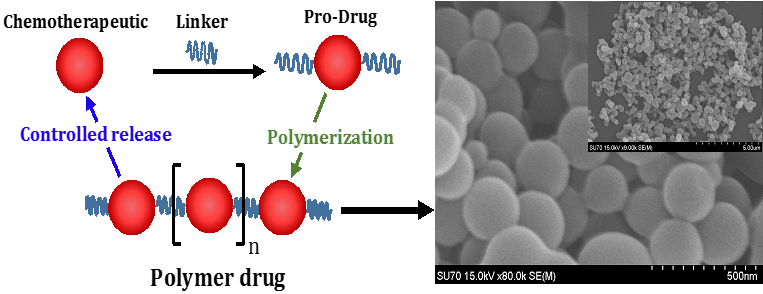Cancer Therapies
Biodegradable polymeric drugs
Repeating units of chemotherapeutic agents
VCU researchers have developed a new approach for the synthesis of biodegradable polymeric drugs for chemotherapy. In current polymeric drug delivery technologies, the bioactive compound is usually encapsulated in a polymer matrix where the monomers forming the polymers are excipients. This can lead to low drug loadings as well as potential toxicity of the polymeric material. Our researchers have demonstrated a strategy where instead of encapsulating the active compound within a synthetic polymer matrix, the active compound is used as a building block of the polymer itself, thus eliminating these drawbacks.
The technology
The polymeric drugs developed using this strategy contain repeating units of the active monomer, which are connected by “linker” molecules. The linker molecules can be varied in order to achieve different thermo-physical properties of the polymeric drug, allowing for the optimization of drug delivery properties including the loading capacity and the rate of depolymerization and drug release. This work is relevant in the treatment of various types of cancers, including pancreatic, lung, bladder, ovarian and breast cancers. These polymer drugs can be explored to prepare a range of engineering materials including nanoparticles and nanofibers.

Figure 1. The process of creating the polymeric drugs through the incorporation of “linker” molecules
